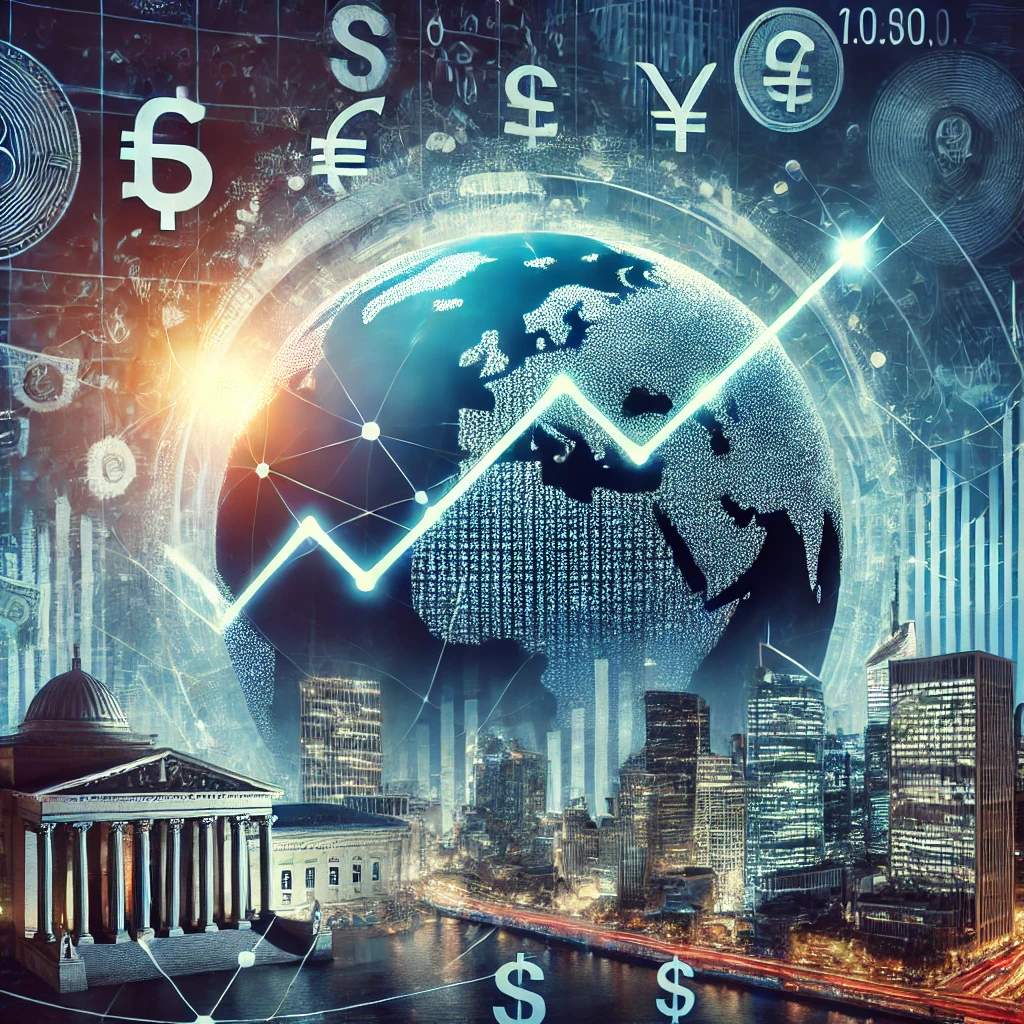Introduction
Inflation has become a major economic challenge worldwide, with central banks closely monitoring rising inflation rates to implement effective monetary policies. Inflationary pressures are influenced by supply chain disruptions, increased tariffs, energy price volatility, and geopolitical uncertainties. As prices rise, businesses, consumers, and policymakers must adapt to mitigate economic risks.
This article explores the causes of inflationary pressures, their impact on the global economy, and how central banks worldwide, including India’s Reserve Bank (RBI), are responding.
Understanding Inflationary Pressures
What is Inflation?
Inflation refers to the pace at which the overall prices of goods and services increase over time, leading to a decline in purchasing power. It is assessed using various economic indicators, including:
- Consumer Price Index (CPI): Measures the price changes of a basket of essential goods and services.
- Producer Price Index (PPI): Tracks price fluctuations at the wholesale level.
- Core Inflation: Excludes volatile items like food and energy to show underlying inflation trends.
Causes of Rising Inflation Worldwide
Several factors contribute to inflationary pressures, including:
1. Supply Chain Disruptions
- COVID-19 pandemic: Factory closures and labor shortages led to production delays and shortages.
- Shipping backlogs: Container shortages and port congestion increased transportation costs.
- Russia-Ukraine war: Disruptions in wheat, fertilizer, and energy supplies caused price hikes globally.
2. Increased Tariffs and Trade Barriers
- U.S.-China trade tensions: Higher tariffs on Chinese imports have led to increased costs for businesses and consumers.
- Export restrictions: Countries limiting exports of essential commodities (e.g., India’s wheat export ban) have led to price surges.
3. Energy Price Volatility
- Oil and gas price fluctuations: Rising energy prices increase transportation and production costs, fueling inflation.
- Shift to renewable energy: Investment in green energy leads to short-term cost increases.
4. Increased Demand Post-Pandemic
- Pent-up consumer demand: After pandemic lockdowns, demand surged faster than supply could recover.
- Government stimulus programs: Increased money supply fueled spending and price hikes.
5. Climate Change and Natural Disasters
- Extreme weather events: Floods, droughts, and hurricanes disrupt agricultural production and supply chains.
- Food price inflation: Crop failures drive up the cost of essential food items.
Effects of Inflation on the Global Economy
1. Declining Purchasing Power
As inflation rises, household incomes fail to keep pace with price increases, reducing purchasing power and impacting consumer spending.
2. Higher Interest Rates
To combat inflation, central banks raise interest rates, which:
- Increases borrowing costs: Mortgages, business loans, and credit card rates rise.
- Slows economic growth: Businesses delay expansion and investments due to high financing costs.
3. Stock Market Volatility
- Rising inflation erodes corporate profits, leading to stock market fluctuations.
- Investors shift towards safe-haven assets like gold and bonds during inflationary periods.
4. Wage-Price Spiral
- As workers demand higher wages to keep up with rising prices, businesses increase prices further to cover labor costs.
- This cycle fuels continuous inflationary pressures.
Monetary Policy Responses to Inflation
1. Interest Rate Adjustments by Central Banks
- U.S. Federal Reserve (Fed): Raised interest rates aggressively to curb inflation.
- European Central Bank (ECB): Increased rates while balancing economic growth concerns.
- Reserve Bank of India (RBI): Adjusted repo rates to control inflation without stifling economic growth.
2. Quantitative Tightening
- Central banks reduce money supply by selling government bonds, slowing inflation.
3. Currency Interventions
- RBI and Bank of Japan: Have intervened in foreign exchange markets to stabilize currency fluctuations.
4. Fiscal Policies
- Subsidies and Tax Cuts: Some governments reduce taxes on essential commodities to lower consumer burden.
- Price Controls: Temporary measures to limit inflation in essential sectors (e.g., fuel, food, healthcare).
India’s Inflation Scenario and Policy Response
1. Inflation Trends in India
- CPI inflation in India averaged 6-7% in 2023-24, driven by food and energy prices.
- The RBI’s target inflation rate is 4%, requiring policy adjustments to control excess inflation.
2. RBI’s Response to Inflation
- Repo Rate Hikes: The RBI increased the repo rate from 4.0% to 6.5% to control inflation.
- Liquidity Management: Open market operations to regulate money supply.
- Supply-Side Measures: Government efforts to reduce food inflation through buffer stock releases.
3. Impact on Indian Consumers and Businesses
- Higher loan EMIs: Borrowing costs for homebuyers and businesses have increased.
- Rising food prices: Essential commodities like wheat, pulses, and edible oils have seen inflationary spikes.
- Stock Market Volatility: Inflation concerns have impacted investor sentiment in Indian equities.
Strategies to Manage Inflationary Pressures
1. Diversification of Supply Chains
Businesses are shifting from China-centric supply chains to India, Vietnam, and Mexico to reduce risks.
2. Technology and Automation
Companies are investing in AI-driven supply chain management and automation to optimize costs and efficiency.
3. Inflation-Protected Investments
- Investors are shifting to real assets like gold, commodities, and inflation-indexed bonds.
- Hedging strategies in forex markets to minimize currency risks.
4. Wage Growth and Productivity Enhancements
- Governments and businesses focus on skill development programs to ensure wages keep pace with inflation.
- Automation and efficiency improvements to maintain profit margins.
Conclusion
Inflationary pressures worldwide are being shaped by supply chain disruptions, energy price volatility, and geopolitical factors. Central banks, including the RBI, U.S. Fed, and ECB, are actively adjusting monetary policies to control inflation while ensuring economic stability.
For businesses, supply chain diversification, automation, and inflation-hedging strategies are critical to navigating inflationary challenges. Consumers and investors must adapt to changing economic conditions by making informed financial decisions.
As inflation remains a global concern, collaborative policy efforts, sustainable fiscal strategies, and technological advancements will be essential in mitigating its long-term impact.
Read also:
How a global trade war could rewire the way fashion operates









+ There are no comments
Add yours